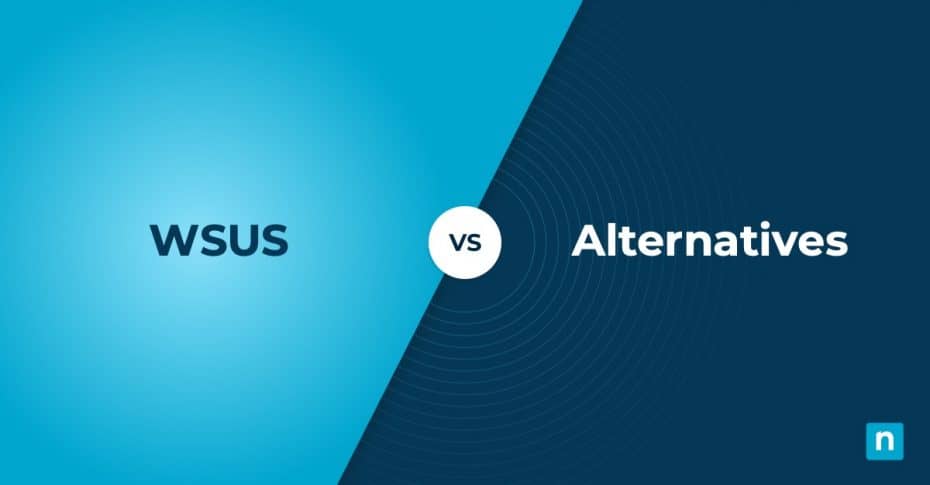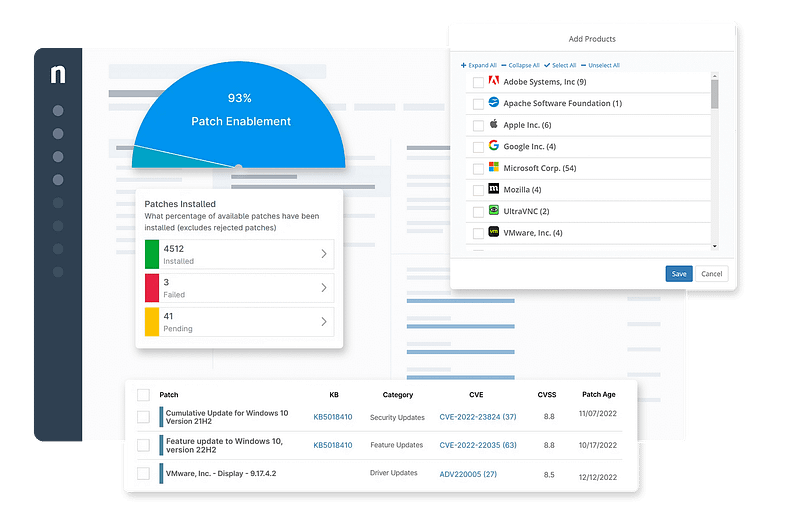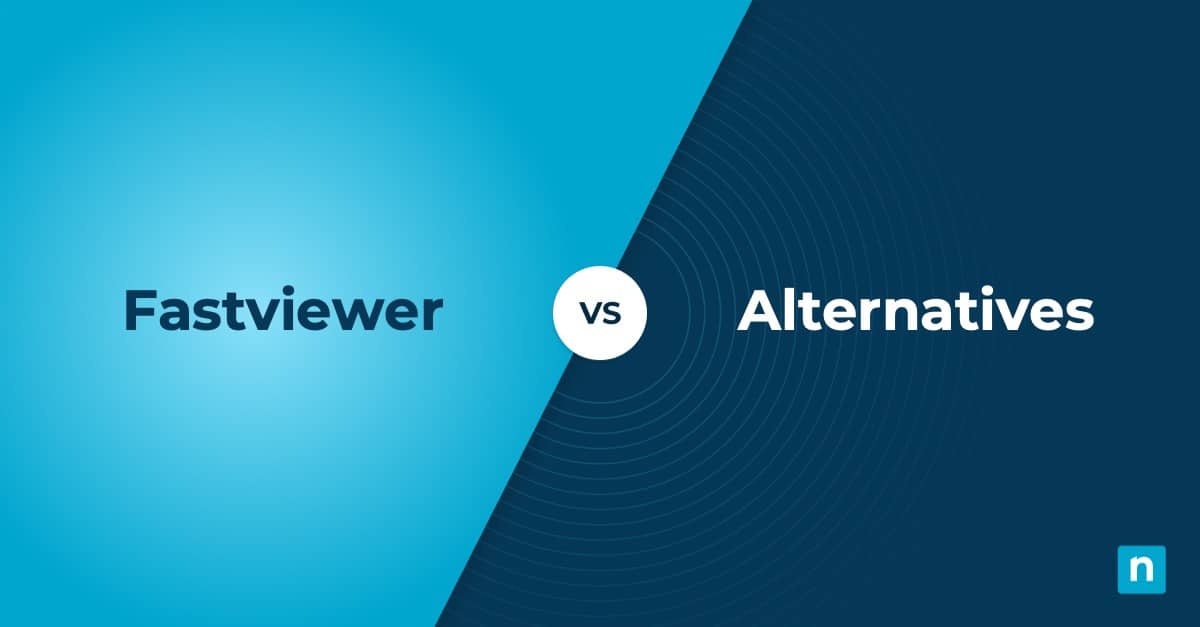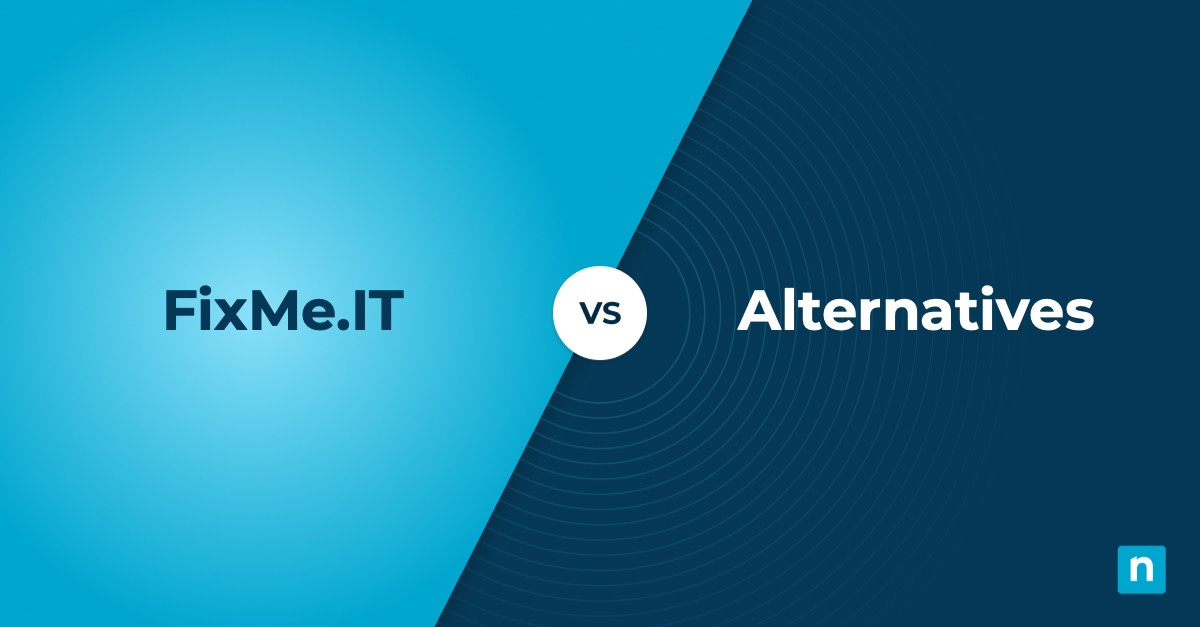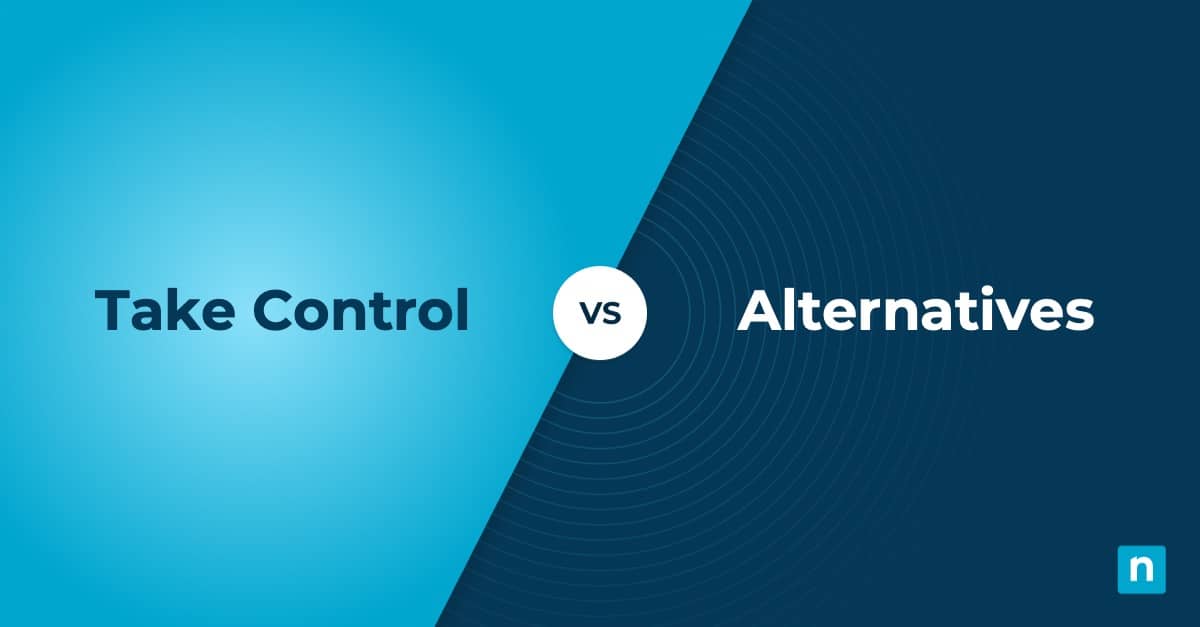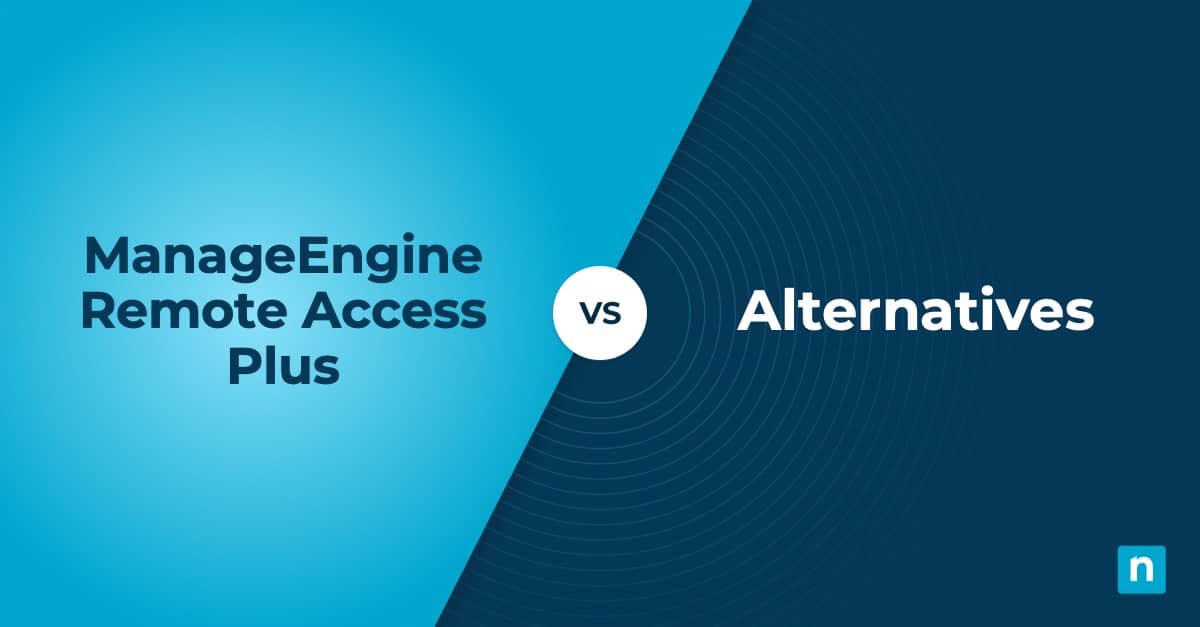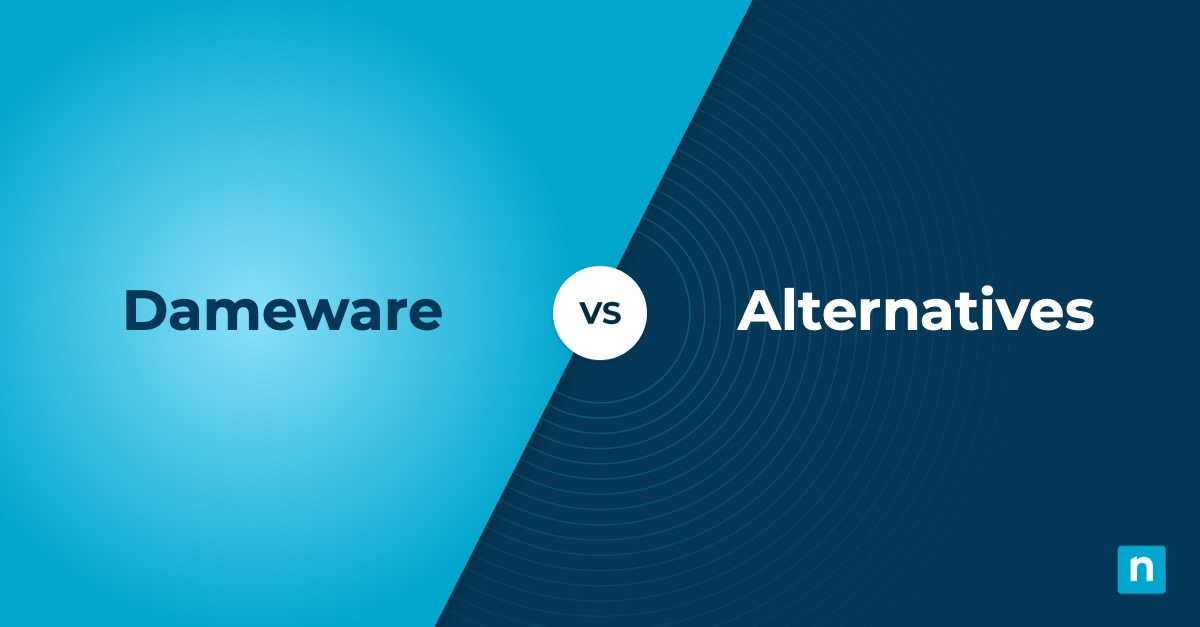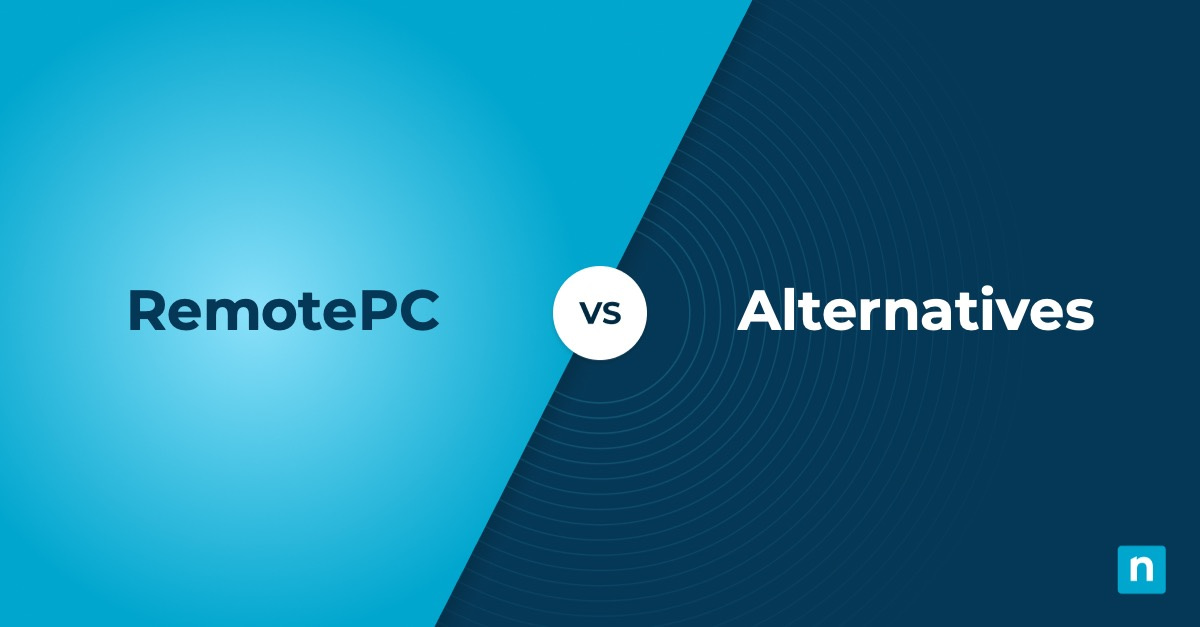Key Points
- Microsoft is deprecating WSUS, meaning no new features will be developed.
- WSUS has limitations, including slow approvals and no cross-platform support.
- Top WSUS alternatives include:
- NinjaOne – Cloud-based, multi-OS patching, automation, and real-time monitoring.
- Automox – Cloud-based patching with full visibility across Windows, macOS, and Linux.
- Ivanti – Automated patch management for OS and third-party applications.
- Kaseya VSA – Policy-based patching and real-time endpoint visibility.
- ManageEngine Patch Manager Plus – Supports over 800 third-party applications.
- PDQ Deploy – Automates Windows patching and enables custom script deployments.
- N-able N-sight – Patch approvals and scheduling with a centralized dashboard.
- BatchPatch – Remote Windows updates, including for offline machines.
- SolarWinds Patch Manager – Works with WSUS and SCCM for automated patching.
- Atera – IT automation with Microsoft patching and reporting tools.
- NinjaOne is the top-rated WSUS replacement, offering automated patching, real-time monitoring, and multi-OS support.
Editor’s Note: In September 2024, Microsoft officially announced the deprecation of WSUS. Specifically, they will no longer invest in new capabilities but will continue to preserve current functionality. We recommend using this guide as a starting point for finding a reliable WSUS replacement to maintain secure and up-to-date patching.
This guide covers the top ten alternatives to WSUS. In doing your due diligence on the best patch management software for your business, you may have encountered Windows Server Update Services (WSUS) and its WSUS patching. Unlike other software vendors that we have written about previously, WSUS patch management is a Microsoft program that allows your IT technicians to deploy the latest Windows products and updates on your client’s endpoints.
Thus, WSUS is essentially a built-in Microsoft program that helps your organization configure and automatically deploy patches to all Windows systems in your IT environment.
💻 Automatically patch all your Windows endpoints and applications with NinjaOne.
Why look for a replacement with WSUS?
WSUS patching has a few limitations, including limited cross-platform support and time-consuming WSUS patch approvals. Given the ever-evolving IT landscape, it is crucial that your IT company can deploy automated patching policies easily and seamlessly so that you can focus on other high-value tasks and maintain your competitive advantage.
Thankfully, there’s this guide. We’ve done the research, looked at all the relevant data from leading review sites, and compiled everything into this comprehensive guide.
Table of contents
- NinjaOne
- Automox
- Ivanti
- Kaseya VSA
- ManageEngine Patch Manager Plus
- PDQ Deploy
- N-able N-sight
- BatchPatch
- SolarWinds Patch Manager
- Atera
Top 10 WSUS alternatives
1. NinjaOne
NinjaOne, the #1 rated RMM and endpoint management solution on the market today, is known for its powerful patch management tool that helps you identify, evaluate, and deploy patches to any of your Windows, macOS, and Linux devices – all from a single pane of glass. Built for today’s IT teams, NinjaOne’s patch management automates every step of the patching process so you can spend 90% less time patching and more time on support and strategic projects.
5 reasons to choose NinjaOne over WSUS patch management
1. Easy to use
One of the main reasons users search for alternatives to WSUS is for better usability. NinjaOne helps you identify known vulnerabilities and deploy patches at scale across servers, workstations, and laptops to significantly reduce threat risks and keep your IT infrastructure healthy. Most importantly, these patches can be pre-emptively approved to prevent zero-day vulnerabilities.
2. Fast monitoring
As the top alternative to WSUS, NinjaOne improves patch compliance with 360-degree visibility from a powerful, intuitive patching dashboard. This allows your team to proactively monitor all your managed endpoints and patch hundreds of common business applications across multiple platforms at scale.
3. Helpdesk
Helpdesks are integral to any good patch management software. As the first line of contact for software or user-related concerns, your IT helpdesk needs to be fast, knowledgeable, and tailored to your specific needs. NinjaOne’s helpdesk software helps you become more efficient through its self-service portals, knowledge bases, and FAQs. Additionally, Ninja allows you to easily create and assign IT tickets for every incident.
4. Multi-OS support
NinjaOne is a great WSUS replacement because it offers multi-OS support in a centralized and actionable dashboard. NinjaOne patch management supports Windows, Mac, and Linux OS patching, and support for 200+ applications. It also supports flexible patching schedules to ensure all endpoints are patched.
5. Reporting
NinjaOne’s endpoint device reporting helps you create impactful reports that clearly depict the data you need to know. The best part? NinjaOne offers a variety of data section templates that you can filter by location, device, group, or timeframe to create your own customized report.
Strengths of NinjaOne
- Unified management. NinjaOne gives you a single pane of glass to monitor, manage, patch, and support all your endpoints. Because of this unified management, Ninja helps you replace 2.5 tools in new customer environments on average.
- Alerts and notifications. Operating on the principle of proactive IT management, NinjaOne uses real-time endpoint health and performance data to generate context-rich alerts through email, SMS, Slack, and other channels.
- Remediation tools. With Ninja, you can easily remediate patching and other device issues with its built-in remote terminal, registry editor, and remote access tools.
- Granular patch control. NinjaOne offers granular patch rejection and approval, allowing you to approve/reject /rollback after the fact to address any patching issues.
- Real-time vulnerability remediation. NinjaOne patch management supports both automated and ad-hoc scans and deployment, making it a superior replacement for WSUS. It also features native inclusion of CVE/CVSS to risk-based patching.
Customer story
Phil Collett, IT Director of Citrus Motors, loves how easy NinjaOne is to use. Having worked with multiple third-party vendors, he appreciates how easy everything is now with NinjaOne’s unified and automated patch management.
“I used WSUS for updates, LogMeIn for remediating remote endpoint issues, we had SolarWinds for managing endpoints as well as Spiceworks for our inventory needs. These legacy applications began having significant breaks and I wanted to slim down my tech stack to a single tool to save time and money,” said Collett.
“Since using NinjaOne’s automatic reboot feature, we’ve reduced the number of helpdesk calls we get by 80%. When we do receive calls, NinjaOne’s remote access reduced our issue resolution time by 89%.”
Read more NinjaOne customer stories or check out NinjaOne reviews.
Pricing information
NinjaOne’s IT management software has no forced commitments and no hidden fees. You can request a free quote, schedule a 14-day free trial, or watch a demo.
Reviews
- 1,647 reviews (at the time of update)
- 4.7 / 5 stars
- 237 reviews (at the time of update)
- 4.8 / 5 stars
See why thousands of customers worldwide trust NinjaOne for their patch management needs.
Learn more about NinjaOne’s Windows Patch Management software.
2. Automox
Automox is an endpoint management solution that offers third-party patch management across Windows, macOS, and Linux devices from a single console. Its cloud-based patch management solution gives IT departments full visibility into all the software installed across their IT network.
Pros
- Centralized tool. Automox allows you to see all device information in one centralized tool.
- Suitable for diverse teams. Automox helps you patch and manage Windows, macOS, and Linux devices.
- Cloud-based console. Automox enables your IT team to easily deploy or remove any software application on any device from anywhere.
Cons
- Poor reboot scheduling. On occasion, Automox will not show if a machine has been scanned and is ready to accept patches if it’s waiting on reboots from the end user. This may necessitate manual reboots.
- Customized reporting. Automox could improve its customized reporting capabilities, particularly in generating reports using real-time information.
- Performance: Automox may sometimes slow down when scanning devices, especially when scanning multiple devices simultaneously.
See how Automox compares to NinjaOne or read a more in-depth analysis of Automox competitors.
3. Ivanti
Ivanti simplifies and automates patch management for physical and virtual services in a centralized dashboard. Its patch management tool helps security professionals create a strong barrier to modern cyberattacks, including discovery, OS and application patch management, privilege management, and allowlisting.
Pros
- Single platform. Ivanti provides a single, centralized platform that offers greater visibility.
- User-friendly. Ivanti’s software solutions are easy to use and understand.
- Automated patch management. Ivanti leverages automation to make its patch management tool more efficient.
Cons
- Internal documentation. Ivanti could improve its internal documentation and resources so IT technicians can easily locate essential information.
- Patch reporting. Some users stated that their solution does not gather information in real-time.
- Performance issues. Ivanti may slow down when accessing devices through a VPN.
See how Ivanti compares to NinjaOne or read a more in-depth analysis of Ivanti alternatives.
4. Kaseya VSA
Kaseya VSA joins this list of WSUS alternatives because it enables the automatic deployment of patches for Windows and other operating systems. You can set up patch reports to see compliance across their entire IT environment and quickly identify endpoints, corresponding OSs, and third-party applications needing updating.
Pros
- Real-time visibility. Kaseya VSA provides real-time visibility into the patch status of your on-and-off network devices.
- Centralized dashboard. The platform helps you install, uninstall, update, and repair devices from a single console.
- Policy-based patch management. Kaseya VSA automates and standardizes software maintenance across platforms.
Cons
- Windows pop-up. Some G2 users say the pop-ups received after Windows patch installs are not customizable.
- Learning curve. There is an initial learning curve, especially for beginner IT professionals.
- Customer support. Customer support could be improved.
See how Kaseya compares to NinjaOne or read a more in-depth analysis of Kaseya alternatives.
5. ManageEngine Patch Manager Plus
Patch Manager Plus is ManageEngine’s all-around patching solution, offering patch deployment for Windows, macOS, and Linux endpoints. A strong contender in this list of alternatives to WSUS, Patch Manager Plus offers patching support for over 900 third-party updates across more than 800 third-party applications. The platform is available both on-premises and on the cloud.
Pros
- Automation. ManageEngine Patch Manager Plus automatically detects, tests, deploys, and reports on patches.
- Multi-OS patch management. The software deploys patches across different operating systems and endpoints.
- Compliance. The tool helps ensure the 100% patch-compliant status of all managed endpoints.
Cons
- Customization. According to some G2 users, it can be challenging to create custom groups.
- Patching third-party applications. On occasion, ManageEngine Patch Manager Plus may be inconsistent with patching third-party applications.
- Suitable for more experienced professionals. There is a learning curve to be considered when using this platform.
See how ManageEngine compares to NinjaOne or read a more in-depth analysis of ManageEngine alternatives.
6. PDQ Deploy
PDQ Deploy helps IT organizations deploy Windows cumulative updates, patch third-party software, deploy custom scripts, and make configuration changes to on-premises Windows devices. You can set a preferred schedule for deployment, and the platform automatically and silently applies updates in the background.
Pros
- Automated. This WSUS alternative automates recurring maintenance tasks.
- Single dashboard. The tool centrally maintains packages, deployment histories, and schedules across multiple administrators.
- PowerShell commands. PDQ Deploy offers an extensive library of PowerShell commands, similar to NinjaOne.
Cons
- Requires VPN. According to some G2 users, PDQ Deploy only works when connected to a VPN.
- Reporting. PDQ Deploy could improve its reporting feature.
- Learning curve. The initial setup may be challenging for beginner IT professionals.
See how NinjaOne compares to PDQ or read a more in-depth analysis of PDQ alternatives.
7. N-able N-sight
N-able N-sight is a well-known RMM platform that offers robust patch management for Microsoft Windows. It is a strong WSUS competitor because you can choose which Windows updates and Microsoft patches are approved. This allows them to properly schedule their patches and avoid any disruptions to their end-users.
Pros
- Unified dashboard. N-able N-sight helps you monitor and patch multiple Windows operating systems from one unified dashboard.
- Single approval. You can enable and deploy patches with a single approval.
- Larger updates. The platform streamlines bulkier updates with patch caching while limiting bandwidth, allowing you to deploy larger updates without WSUS.
Cons
- Performance. Some G2 users have stated that N-able N-sight may slow down when patching multiple devices.
- Initial setup. The platform may be challenging to set up at first.
- Interface. N-able N-sight may be better suited for more experienced IT professionals.
See how N-able N-sight compares to NinjaOne.
8. BatchPatch
Since the deprecation of WSUS, BatchPatch has often been touted as a great alternative. The software helps you install Windows updates and deploy software remotely across your network. It also features the optional “Cached Mode”, which allows you to apply Windows security updates to computers without internet access.
Pros
- Singe console. You can initiate Windows updates on multiple remote computers from one dashboard.
- Flexibility. BatchPatch allows you to choose whether to install all available updates or install specific ones.
- Reporting. You can retrieve Windows Update history information from your computers and consolidate it into a report.
Cons
- On-premises. BatchPatch does not offer a cloud version of its tool.
- Requirements. The tool uses a combination of Windows Management Instrumentation (WMI) and PsExec to access remote computers, plus ICMP for pinging.
- User-interface. The solution may be better suited for more experienced IT professionals.
9. SolarWinds Patch Manager
SolarWinds Patch Manager works with WSUS and SCCM to monitor newly released software updates, including for third-party applications. The tool automatically notifies you when new updates are available and offers an easy-to-use console to select, approve, and schedule or deploy the patches.
Pros
- Scheduling. SolarWinds Patch Manager gives you full control over when patches are deployed.
- Reporting. You can create reports on the current patching status.
- Pre-tested third-party application packages. The platform provides pre-built and pre-tested third-party application packages ready to deploy.
Cons
- Suitable for larger organizations. SolarWinds Patch Manager is suitable for enterprises with more resources.
- Performance. According to some G2 users, the platform may slow down when multiple devices are patched simultaneously.
- Customization. Some G2 users have stated that the platform is not as customizable as other software.
10. Atera
Atera ends this list of WSUS alternatives due to its robust patch management tool that allows you to view, update, and maintain your installed patches. Levering automation, Atera’s patching tool enables IT organizations to maintain up-to-date software, hardware, and operating systems, install Microsoft updates according to their preference, and apply all available patches.
Pros
- IT automation. Atera’s patching tool enables organizations to identify security vulnerabilities and install patches automatically within their networks.
- Windows patch management. You can manage, deploy, and monitor software updates and patches for your Windows servers.
- Reporting. The tool provides comprehensive reports so you can understand overall patch performance.
Cons
- Customization. Some G2 users have stated that Atera is not as customizable as expected.
- Patching status. According to G2 users, Atera could improve how it presents patching status, such as informing them of the progress of a specific patch.
- Performance. Atera may slow down at times.
See how Atera compares to NinjaOne or read a more in-depth analysis of Atera alternatives.
The best alternatives to WSUS
WSUS was a robust patch management tool for Windows devices, but since its deprecation, it may not provide you with the coverage and robustness to meet modern needs.
It would be wise to search for a WSUS replacement. Ideally, you should look for an alternative to WSUS that supports patch management not only for Windows devices but also for other operating systems and business applications. This way, you can be more confident that your system’s vulnerabilities are significantly reduced.

